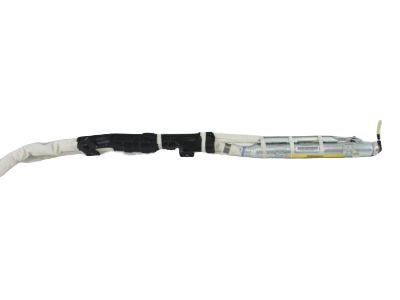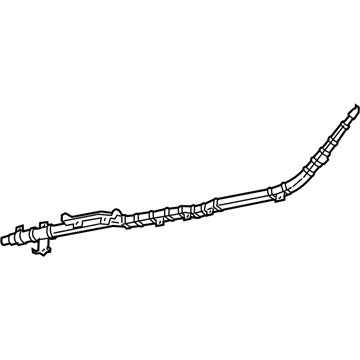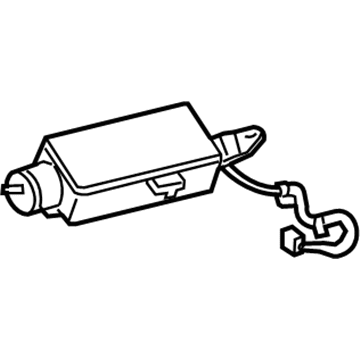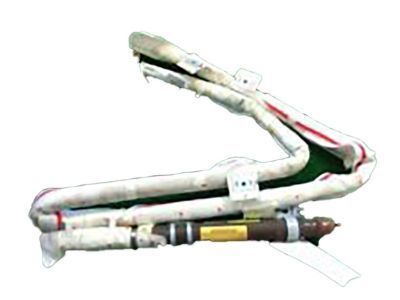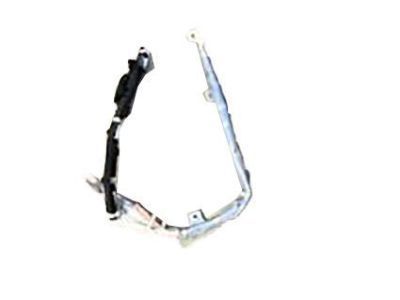×
ToyotaParts- Hello
- Login or Register
- Quick Links
- Live Chat
- Track Order
- Parts Availability
- RMA
- Help Center
- Contact Us
- Shop for
- Toyota Parts
- Scion Parts
My Garage
My Account
Cart
OEM 2005 Toyota 4Runner Air Bag
Air Bag Module- Select Vehicle by Model
- Select Vehicle by VIN
Select Vehicle by Model
orMake
Model
Year
Select Vehicle by VIN
For the most accurate results, select vehicle by your VIN (Vehicle Identification Number).
3 Air Bags found

2005 Toyota 4Runner Inflator Curtain, Passenger Side
Part Number: 62170-35020$1325.56 MSRP: $1942.62You Save: $617.06 (32%)Ships in 1-3 Business DaysProduct Specifications- Other Name: Air Bag Assembly, Curtain Shield; Curtain Air Bag, Right; Head Air Bag; Air Bag Assembly, Curtain Shield, Passenger Side
- Position: Passenger Side
- Part Name Code: 62170A
- Item Weight: 12.20 Pounds
- Item Dimensions: 47.4 x 18.7 x 9.2 inches
- Condition: New
- Fitment Type: Direct Replacement
- SKU: 62170-35020
- Warranty: This genuine part is guaranteed by Toyota's factory warranty.
2005 Toyota 4Runner Passenger Air Bag
Part Number: 73960-35050$685.68 MSRP: $1004.86You Save: $319.18 (32%)Ships in 1-3 Business DaysProduct Specifications- Other Name: Air Bag Assembly, Instrument Panel; Instrument Panel Air Bag, Upper; Passenger Inflator Module; Air Bag Assembly, Instrument Panel Passenger W/O Door
- Part Name Code: 73960A
- Item Weight: 8.20 Pounds
- Item Dimensions: 14.9 x 11.7 x 7.8 inches
- Condition: New
- Fitment Type: Direct Replacement
- SKU: 73960-35050
- Warranty: This genuine part is guaranteed by Toyota's factory warranty.
 Product Specifications
Product Specifications- Other Name: Air Bag Assembly, Curtain Shield; Curtain Air Bag, Left; Head Air Bag; Air Bag Assembly, Curtain Shield, Driver Side
- Position: Driver Side
- Part Name Code: 62180A
- Item Weight: 12.30 Pounds
- Item Dimensions: 47.4 x 18.7 x 9.5 inches
- Condition: New
- Fitment Type: Direct Replacement
- SKU: 62180-35020
- Warranty: This genuine part is guaranteed by Toyota's factory warranty.
2005 Toyota 4Runner Air Bag
Looking for affordable OEM 2005 Toyota 4Runner Air Bag? Explore our comprehensive catalogue of genuine 2005 Toyota 4Runner Air Bag. All our parts are covered by the manufacturer's warranty. Plus, our straightforward return policy and speedy delivery service ensure an unparalleled shopping experience. We look forward to your visit!
2005 Toyota 4Runner Air Bag Parts Q&A
- Q: How is the activation prevention mechanism for the Air Bag connector released without causing damage on 2005 Toyota 4Runner?A: An activation prevention system exists inside the connector which controls the squib circuit of the SRS. The activation prevention system can be unlocked by inserting paper against the male terminal matching its thickness between the terminal and the short spring. The process of releasing the activation prevention mechanism should only proceed when the troubleshooting procedure explicitly instructs to do so. The activation prevention mechanism requires paper with matching thickness to the male terminal to prevent terminal and short spring damage in use.
